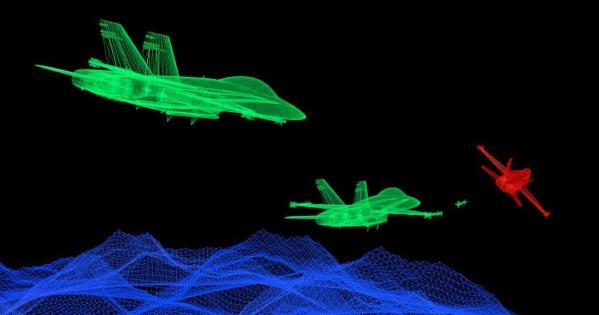Two Facts and a Fiction: Droning on about AI in the Military

The United States armed forces are on a mission to assess the usefulness of generative AI.
The New York Times reported in August that the US Air Force is testing a new generation of autonomous combat planes that don’t need a pilot—on the ground or in the air. The Department of Defense also recently announced it will deploy a new AI-enabled detection system to monitor the air space over the DC area, home to approximately 6 million people.
Here, School of International Service professor Trey Herr explains the significance of the military’s Pentagon-sized investment in generative artificial intelligence and what could be ahead for the technology.
Fact: The US government is committing significant resources to exploring AI.
Summer 2023 marked the convergence of numerous government investments in research on the applications of artificial intelligence in combat and defense.
The Pentagon budget for fiscal year 2024 earmarked $1.8 billion for innovative and modern artificial intelligence initiatives. And in August, the White House announced a major research push to broaden the number of people working to secure artificial intelligence models through the AI Cyber Challenge.
The two-year competition, led by the Defense Advanced Research Projects Agency, challenges computer scientists, software developers, and others to identify and fix software vulnerabilities to make existing AI tools more secure before the technology is used in more critical applications.
Fact: Militaries across the world—including both our adversaries and our allies—are grappling with how and when to use generative AI.
Ukraine and Russia, for example, have used artificial intelligence software in long-range engagement during the war, strategically bombing each other using guided munitions like drones in conjunction with conventional forces. The British Royal Navy has also experimented with aircrafts that can land on ships autonomously, even if a human is in the cockpit.
Fiction: This is the first time that computers have been significantly involved in mediating the information humans receive to make decisions.
The miliary has used autonomous technologies for years for tasks like interpreting photo reconnaissance and gathering and filtering electronic information. But the creation of large-language models, which power systems like Open AI’s ChatGPT, has significantly changed the applications of artificial intelligence for the military.
Large-language models employ neural networks, which teach computers to imitate how a human brain thinks. This means AI isn’t just an assistive tool that helps humans make decisions. It has the capability to interpret information and make decisions on its own—and is likely to significantly change the role of humans in combat.
